March 2018
New & Renewing Memberships
Renewing Benefactor
New Sustaining Member
Renewing Supporting Member
Member Spotlight - Waste Management
NERC News
Newly Posted
State Updates
MASSACHUSETTS
NEW YORK
Advisory Member News
Of General Interest
New & Renewing Memberships
Membership is key to NERC's regional and national commitment to sustainable materials management. We are delighted to welcome Panasonic as a renewing Benefactor and Waste Management as a new Sustaining Member. We also thank BHS-Sonthofen for being a renewing Supporting Member. Thank you to all our Advisory Members.
To see a complete listing of NERC's Members and Supporters, as well as the benefits of membership, visit the NERC Advisory Membership web page.
The broad spectrum of interests represented by NERC's Advisory Members, Individual Supporters, and Board Members and their willingness to participate significantly contribute to the unique and important role that NERC plays in recycling in the region.
For more information, contact Lynn Rubinstein, Executive Director.
Member Spotlight - Waste Management
Founded in 1971 and headquartered in Houston, Texas, Waste Management is  the largest US-based company in the environmental and waste industry sector. The company serves more than 21 million municipal, commercial and industrial customers in the US and Canada. In 1988—at a time when recycling rates in the US were a mere ten percent—it launched its first major curbside recycling program. It is not a coincidence that domestic recycling rates have tripled in the decades since then.
the largest US-based company in the environmental and waste industry sector. The company serves more than 21 million municipal, commercial and industrial customers in the US and Canada. In 1988—at a time when recycling rates in the US were a mere ten percent—it launched its first major curbside recycling program. It is not a coincidence that domestic recycling rates have tripled in the decades since then.
According to its 2017 Sustainability Report Update, Waste Management’s business operations include 243 landfills; methane gas is extracted from 131 of them, enough to power some 470,000 homes, and offset more than two million tons of coal per year. The company also boasts the largest fleet of fleet of natural gas trucks in North America, and 28 of its 104 natural gas filling stations are open to the public. Over 30% of the company’s natural gas trucks operate on Renewable Natural Gas, one of the lowest carbon vehicle fuels available.
North America’s largest residential recycler, Waste Management manages 14 million tons of recycled or reused material annually, with a goal of 20 million tons by 2020. Its 310 transfer stations include 96 traditional recycling facilities, 43 single-stream facilities, and eight construction and demolition recycling facilities. Forty-three organics processing facilities manage more than two million tons of organics each year, which are converted to compost, mulch, and, via anaerobic digestion, energy.
Working to help customers achieve high recycling rates, Waste Management was among the industry’s earliest adopters of the single-stream recycling method, in which recyclables—glass, metal, plastic and paper—are recycled together and then separated at a materials recovery facility (MRF). The company found that single stream recycling consistently increased both recycling participation and tons collected.
While the ease of single-stream recycling is credited with helping to drive higher recycling rates, it is also undeniable to many critics that increased contamination has led to a devaluation of the worth of recycled commodities. In response, Waste Management developed it’s “RecycleOften.RecycleRightSM” recycling education program, and has continued to invest in technologies at it MRFs. Additional optical sorters, new types of conveyors and a recently installed a robotic unit in a MRF located outside Houston are all part of WM’s efforts to improve the quality of recyclables moving through its facilities. “We’re testing it now, but it definitely will make cleaner material and it will make our plant more efficient,” Brent Bell, vice president of recycling, recently told Resource Recycling. Bell also noted that the company is seeking to form more relationships with companies that espouse the use of recycled materials in their branding.
Waste Management’s sustainability goals go beyond sustainable materials management. Its efforts to address the risks of climate change have resulted in its being included on CDP’s 2017 Climate A List in 2017, for the second year in a row. Fewer than five percent of companies reporting on GHG emissions to CDP make the A list. “With help from our employees and customers, working toward reductions in greenhouse gas emissions is the right thing to do for our planet, for our company and for our future generations,” CEO Jim Fish said.
The publicly traded company has been selected for inclusion in the Dow Jones Sustainability Index for 13 of the past 15 years. It has been recognized by the Ethisphere Institute as one of the World’s Most Ethical Companies for 10 years in a row, and is a recent recipient of the Women’s Choice Award for Best Companies to Work For, as well.
In January 2018, Waste Management became a Sustaining Advisory Member of the Northeast Recycling Council. Susan Robinson, Waste Management’s Federal Public Affairs Director explained that they “joined NERC because I’ve found them to be a really strong organization that supports key Waste Management issues, and does a good job of educating city/county/state staff in the Northeast – from Delaware through Maine and New Hampshire.”
NERC News
NERC’s Workshop to Feature Sessions for Maximum Attendee Participation
 Have you ever returned from an event not knowing what the key takeaways were? The Northeast Recycling Council’s Workshop—Markets or Bust—will be sure to address this dilemma. The Workshop sessions have been designed to encourage and include the full participation of attendees. In this way, attendees will have a chance to fully comprehend and retain recycling market issues and market development opportunities for glass, compost, paper, and plastics.
Have you ever returned from an event not knowing what the key takeaways were? The Northeast Recycling Council’s Workshop—Markets or Bust—will be sure to address this dilemma. The Workshop sessions have been designed to encourage and include the full participation of attendees. In this way, attendees will have a chance to fully comprehend and retain recycling market issues and market development opportunities for glass, compost, paper, and plastics.
The Workshop will be held on April 3rd at the Sheraton Baltimore Washington Airport Hotel in Maryland.
Gold Sponsor

Bronze Sponsors




NERC Staff Happenings
Project Manager Athena Lee Bradley recently escaped the Vermont cold for a warm and sunny Atlanta, where she attended the U.S. Composting Council’s 26th Annual Conference. Being among more than 1100 “composters” from all across the US and around the world was an exciting learning and networking experience. There were also 100 exhibitors featuring everything from compost equipment and systems to compostable products.
Athena attended the Best Practices in Community Composting “Pre-conference” Workshop, which was followed by two full days of sessions, social events, and loads of networking. She also presented in the Rural Composting Programs session on “Small Town/Rural Composting and Food Scrap Management Strategies.” The session was well attended, with about 70 participants.
Two definite highlights of the workshop and conference were the considerable number of young professionals and people of color in attendance.
Athena also co-authored an article titled “The Middle Ground” for the January edition of Resource Recycling. The article discusses a community composting project in Vermont. She provided technical assistance, training, and resource development for the project through NERC’s USDA funded Implementing the Food Recovery Hierarchy in Rural Vermont Communities.
NERC’s Assistant Director, Mary Ann Remolador, will be attending the New York Federation Conference in May. While there, she will facilitate a session she developed—Business Programs That Promote Sustainability. The speakers will include John Vana, Chief of Pollution Prevention Unit, New York Department of Environmental Conservation to talk about the New York Green Business Program and David Levine, Executive Director, American Sustainable Business Council to talk about the Council’s work for policy change to support the triple bottom line of People, Planet, and Profit.
NERC Reblog - Fake Organics
Fake news is all the rage these days, but personally, I’ve been waiting years for fake products to become more a focus of conversation. The fake products to which I refer are the ones that manufacturers and sales representatives market as “compostable” but in reality contain noncompostable plastic polymers.
In her 2016 blog article Death of Composting, Ayr Muir, founder and CEO of Clover Food Lab, a restaurant group in Boston, admonished composter Save that Stuff for no longer accepting compostable products. A longtime hauler of food scraps and compostable foodservice items, Save that Stuff had revised its policy to exclude compostable serviceware, to-go boxes, compostable cups, waxed or regular cardboard, and other paper products. In her blog, Muir wrote that her restaurants have been using all compostable products since 2010.
Other haulers adopted similar policies as several compost facilities in the Boston area announced they would only accept food scraps and would no longer accept compostable products. Institutions including the Massachusetts Institute of Technology (MIT), as well as businesses around the Boston area, were impacted.
Accepting just food scraps can make the composting process easier, as compostable products break down more slowly than food scraps. More importantly, however, post-consumer food scrap collection, especially when combined with paper and compostable foodservice items, is frequently more contaminated with non-biodegradable materials. Sometimes this occurs because “compostable” products are not fully compostable. It also occurs when food service workers, or customers busing their own plates, place plastics and other contaminants into post-consumer materials destined for a compost operation.
There are challenges to effectively diverting postconsumer food scraps and compostable products. But contamination can be successfully addressed through education. The experience of many compost operations has proven that working with haulers and customers can result in a clean stream of food scraps and certified compostable products.
However, there is no excuse for selling fake compostable products. And there’s a lot of harm done when those fake products are diverted to the organics stream. Compost operators are unknowingly processing items which do not fully degrade, which leads directly to the situation that restaurant owner Muir decried: many operations now refuse to accept compostable products because of the threat of contamination.
Meanwhile, consumers are told that these misleading products are compostable.
In 2002, standards for compostable products were established. These standards—ASTM D6400 and ASTM D6868 –establish specifications and tests that scientifically prove a material will biodegrade within a specific time frame, while leaving no persistent synthetic residues.
To guarantee that designated products are truly compostable, the Biodegradable Products Institute (BPI) adopted a certification program. Member companies whose finished products are certified as meeting ASTM D6400 and/or ASTM D6868 can use the Compostable Logo to provide assurance of compostability or biodegradability.
The program ensures credibility and recognition for products that meet the ASTM D6400 and/or D6868 standards, so consumers, composters and regulators know that products will biodegrade as expected. The logo is designed to be placed on the actual product as well on as packaging materials and sales literature.
Despite these and other regulatory efforts, a confusing array of so-called “compostable” bags and other products, complete with “greenwashing” labels – degradable, decomposable, biodegradable, etc.—continue to be marketed. Some products employ such misleading terms as “eco” or “bio.” The use of the color green for bags is yet another tactic used to market fake products.
Thankfully, two states and at least one municipality have taken on a leadership role in addressing the issue. In 2012, California mandated that products with the label “compostable” meet ASTM standards. Then, in 2013, the law extended the restriction to all plastic products, including containers, bags, straws, lids, and utensils; in fact, any consumer product and any kind of packaging claiming to be compostable have to meet ASTM standards.
Under California’s law, products labeled “compostable” or “marine degradable” must meet the applicable standard, specifically:
- ASTM D6400 for Compostable Plastics;
- ASTM D7081 for Non-Floating Biodegradable Plastics in the Marine Environment;
- ASTM D6868 for Biodegradable Plastics Used as Coatings on Paper and Other Compostable Substrates.
In 2017, Maryland adopted House Bill 1349, which requires products sold in the state and labeled as compostable to meet specific biodegradability standards. Starting in October 2018, plastic products labeled as compostable cannot be sold in the State unless they meet ASTM standards and the labeling guides in the Federal Trade Commission’s (FTC) Green Guides.
A 2011 Seattle ordinance bans single-use and biodegradable carryout bags. The ordinance was subsequently revised to address contamination from plastic bags in compost. The revised ordinance requires certain compostable bags to be labeled and tinted green. The purpose of the legislation was to reduce contamination of the City’s compost (food and yard waste) stream caused by customer misidentification and misunderstanding of which bags are compostable and which are not.
The legislation prohibits use of green or brown-tinted, non-compostable plastic bags for products such as vegetables, or for use as carryout bags. The ordinance also adds a definition of “compostable” to the code and requires that compostable bags be labeled as compostable.
Certified compostable products have a vital role in helping us to divert food scraps and compostable foodservice items from the waste stream. But until more is done to stop these fake compostable products, confusion and misunderstanding among institutions, commercial food scrap generators, haulers and composters are likely to continue. Without a more concerted effort to stop greenwashing, the organics industry will continue to face hurdles in capturing food scraps and organics from the waste stream.
By Athena Lee Bradley (with editorial input from Robert Kropp); originally posted on the NERC Blog on January 17, 2018.
Newly Posted
Northeast States' Definitions of Compostable & Recyclable
NERC has 11 member states - Connecticut, Delaware, Maine, Maryland, Massachusetts, New Hampshire, New Jersey, New York, Pennsylvania, Rhode Island, and Vermont - and each of them takes a slightly different approach to the definition of recyclable and compostable: Northeast States' Definitions of Compostable & Recyclable. This new resource details each state's definition - as available - of:
- Biodegradable plastic
- Compost
- Compostable
- Compostable products
- Compostable materials
- Compostable Plastic
- Processed recyclable material
- Recyclable
- Recyclable material
- Recycle
- Recycled product
- Recycling
In addition to the definition, a citation is provided.
For more information, contact Lynn Rubinstein, NERC Executive Director.
How to Beat Residential Recycling Contamination Webinar Recording - Now Posted
NERC, in conjunction with NEWMOA, recently hosted an extremely successful webinar about how to avoid residential recycling contamination. The speakers were:
- Dylan de Thomas, Vice President of Industry Collaboration, The Recycling Partnership
- Jason Hale, Vice President of Communications, The Recycling Partnership
- Brooke Nash, Branch Chief for Municipal Waste Reduction, Massachusetts Department of Environmental Protection
- Chris Coady, Technical Assistance Team, The Recycling Partnership
More than 400 individuals from around the nation and Canada participated in the webinar. The PowerPoint presentation and a recording of the webinar are both available.
An interesting tidbit about the webinar: we asked people to Tweet during the webinar to #CleanRecyclingIsBetter with ideas and comments about residential recycling contamination. Twenty-seven individuals tweeted, with another 27 retweets and 40 likes. Let's keep the conversation going.
State Updates
MASSACHUSETTS
Massachusetts Supports Growing Recycling Businesses
The Massachusetts Department of Environmental Protection’s (MassDEP) 2017 Recycling Business Development Grant (RBDG) awards have been announced.
The RBDG program targets difficult-to-recycle materials in order to promote recovery, and build the state’s infrastructure to better manage these materials. This most-recent round of awards targeted food with contaminants such as plastic, rubber gloves, and cutlery; wood; and bulky, rigid plastics. As a condition of receiving funding, grant recipients commit to meeting tonnage goals over a two-year period.
The grant recipients are:
Ag-Grid Energy, LLC
Amount Awarded: Up to $250,000
Project Description: Ag-Grid Energy, LLC is forming Rockwood Ag-Grid Organics, LLC, together with Rockwood Farm in Granville. Located at 355 Granby Road, this farm will be the site of an anaerobic digestion facility that will co-digest manure from the farm’s dairy cows and food materials from off-site sources. Ag-Grid Energy, LLC is requesting funds to purchase a de-packaging unit that will enable the facility to accept food contaminated with other materials and separate those materials to produce a high quality feedstock for the anaerobic digestion facility. Initially, the facility will be able to accept about 20,000 tons of food material annually, with the potential to increase to 60,000 tons per year over time.
Martin’s Farm Compost
Amount Awarded: Up to $146,000
Project Description: Located at 341 Plain Road in Greenfield, Martin’s Farm Compost is a family-owned compost operation. Martin’s Farm is seeking funds to purchase a screener that will remove small pieces of plastic, metal, glass and other inorganics from compost. This will improve the quality and increase the value of their compost products and allow Martin’s Farm to process as much as 9,000 tons of food material annually.
ReEnergy Roxbury, LLC
Amount Awarded: Up to $50,000
Project Description: Located at 101 Gerard Street in Boston, ReEnergy Roxbury, LLC operates a processing facility for construction and demolition materials. ReEnergy is requesting funds to purchase recycling storage bunkers and a vertical baler for bulky rigid plastics. The equipment investment will enable the facility to process and separate an additional 15,000 tons of material per year for recycling, including 3,000 tons per year of wood and 1,500 tons per year of bulky, rigid plastics.
United Material Management of Millbury, LLC
Amount Awarded: Up to $250,000
Project Description: Located at 333A Southwest Cutoff in Millbury, United Material Management of Millbury, LLC is building a new facility to accept and process mixed construction and demolition debris materials. UMM is requesting funds to purchase new sorting equipment, including split bins, wood conveyors, a vibratory screener, a wood-picking line, and a wood fines vibratory screener. This new processing equipment will enable the facility to separate up to 29,000 tons of wood per year for recycling.
Waste Management Boston CORe
Amount Awarded: Up to $100,000
Project Description: Waste Management is a national company that has established a Centralized Organics Recycling (CORe) facility at 200 Terminal Street in Charlestown. This facility takes in food material that contains some inorganic material, such as plastic bags and gloves, and processes it to produce a slurry material that can be used as a feedstock for anaerobic digestion facilities that produce renewable energy. Waste Management is seeking funds for a blending and storage tank, along with associated piping and pumping infrastructure. This equipment will greatly increase the facility’s capacity to accept and manage contaminated food materials.
To learn more about MassDEP’s Recycling Business Development Grant Program, please visit the RBDG’s dedicated webpage. Additionally, MassDEP is responsible for ensuring clean air and water, safe management and recycling of solid and hazardous wastes, timely cleanup of hazardous waste sites and spills and the preservation of wetlands and coastal resources. For more information regarding the MassDEP and its mission, please visit the agency’s webpage.
NEW YORK
New York Announces $500,000 Settlement Against Beverage Distributor For Repeated Violations of Bottle Bill
Governor Andrew M. Cuomo and Attorney General Eric T. Schneiderman have announced that the state has settled a lawsuit against New Jersey-based company, North Bergen Beverage, for repeated violations of New York's Returnable Container Act, otherwise known as the Bottle Bill. The $550,000 in penalties and costs, including $400,000 in new penalties on top of a previous payment of $100,000, as well as $50,000 for the cost of the state's investigation of this matter, is the largest-ever penalty for Bottle Bill violations. The total penalties being paid by North Bergen Beverage are more than three times greater than the previous largest-ever penalty paid by a beverage distributor for alleged violations of New York's Bottle Bill. The Consent Judgement is available here.
"Companies have a legal and ethical responsibility to comply with the state's environmental laws." Governor Cuomo said. "This case serves as a strong reminder that New York will continue its strong record of environmental protection and enforce the laws against any deceptive practice that takes advantage of consumers and put the environment at risk."
"New York's Bottle Bill is a hallmark environmental law - reducing litter, promoting recycling, and generating millions of dollars that benefit New Yorkers' health and environment each year," Attorney General Schneiderman said. "As we allege, North Bergen Beverage persistently, repeatedly, and knowingly broke the law. This largest-ever penalty and three-year suspension sends a clear message to all beverage distributors: if you do business in New York and break the Bottle Bill law, my office will hold you accountable."
Investigations by Department of Environmental Conservation's Environmental Conservation Police Officers and the Attorney General's Office revealed that, since 2013, North Bergen Beverage had sold millions of containers of regulated beverages in New York, for which the required 5-cent deposit was not collected by a registered deposit initiator and placed into a dedicated account. A portion of the unredeemed bottle deposits in a deposit initiator's dedicated account must then be remitted to the state each quarter. By flooding the New York market with these beverages, the company allegedly undermined the law, gained an unfair price advantage over competitors, and denied the state millions of dollars in revenue.
DEC Commissioner Basil Seggos said, "Unclaimed bottle deposits support important environmental programs that protect the State's environment, reduce waste disposed in landfills, and save energy. Companies operating in New York have a responsibility to comply with the state's environmental laws, and I commend DEC investigators and our partners in the Attorney General's Office for taking decisive action in the North Bergen beverage case."
New York's Bottle Bill, enacted in 1983, expanded in 2009, and strengthened in 2013, regulates carbonated soft drinks, water, beer, other malt beverages and wine coolers sold in containers of less than one gallon in size. It has been one of the state's most effective recycling and litter prevention programs.
Under the terms of the settlement, if the company violates the court-ordered settlement by selling any regulated beverage during the three-year no-sale period, it would be required to pay the state an additional penalty of $400,000. In addition, North Bergen Beverage will not be allowed to sell any regulated beverage containers in New York for three years. All fines and penalties received for violations of the Bottle Bill are deposited in the state's Environmental Protection Fund.
Based on an investigation conducted by the Attorney General's office and DEC, North Bergen Beverage - doing business under several names since January 2011, including Fly Fly Steven Beverage, and Beverage Plus - sold beverages in New York for which a deposit had not been initiated, in violation of the law. The company sold tens of millions of beverage containers for which a deposit had been initiated in New York without collecting the required nickel deposit. The suit charged that through these illegal activities, North Bergen Beverage created an unfair price advantage for its products over its competitors in New York.
The Bottle Bill requires that beverage containers covered by the law carry a label indicating a New York deposit of at least five cents, and that a deposit be collected on every beverage container sold in the state. The entity that first sells or offers the beverage for sale in the state, and collects the first nickel deposit, is the "deposit initiator." Distributors such as North Bergen Beverage that typically buy from deposit initiators and then resell beverage containers to retailers that sell directly to consumers, must also charge a nickel deposit for each container sold. Once a beverage container is returned, the process is reversed so that each party that paid a nickel in the process is refunded a nickel.
By flooding its New York market with millions of beverage containers for which a deposit was never initiated, North Bergen Beverage caused the refund accounts of registered deposit initiators to be reduced when the "non-initiated" containers the company sold into New York were redeemed. Since deposit initiators are required to remit 80 percent of all unclaimed deposits to the state of New York, the lawsuit charged that the reductions in refund accounts caused by North Bergen Beverage's illegal activities resulted in the state being deprived of revenue conservatively estimated in the millions of dollars.
The deposit initiator must register with the New York State Department of Taxation and Finance before selling in the state and maintain a refund value account into which the deposits collected on the first sale of the beverage for consumption in the New York are deposited. When returned containers reach the beverage deposit initiator, funds are taken out of the account for that reimbursement. On a quarterly basis, deposit initiators must remit to the state 80 percent of the unclaimed deposits held in the account.
The Bottle Bill is credited with reducing roadside container litter by 70 percent and recycling 125 billion plastic, glass and aluminum containers (an average of 4.5 billion per year), equal to nine million tons of materials, at no cost to local governments.
In 2014, Attorney General Schneiderman obtained a $160,000 settlement against another New Jersey-based company, FID Distributors, and an $80,000 settlement against a Monroe County company, The Juice Factory Corp., both for failing to register as deposit initiators and opening refund deposit accounts, while repeatedly collecting deposits, thus evading the required payment of a portion of unclaimed deposits to the state.
This case is being handled by Senior Enforcement Counsel Andrew Gershon, Assistant Attorneys General John Turrettini and Mandy DeRoche, and Deputy Bureau Chief Monica Wagner of the Environmental Protection Bureau, which is led by Bureau Chief Lemuel M. Srolovic and is part of the Division of Social Justice, which is led by Executive Deputy Attorney General for Social Justice Matthew Colangelo. DEC Senior Attorney Cristin Clarke and Bureau of Environmental Crime Investigations (BECI) unit Lt. Jesse Paluch and Inv. Sara Komonchak assisted in this matter.
New York 2018 Organics Summit - March 27 - 28
 The 4th Annual New York State Organics Summit will take place March 27 - 28 at the Poughkeepsie Grand Hotel in Poughkeepsie, NY. This yearly event engages stakeholders from across the state in facilitative discussion aimed at developing creative solutions to barriers that restrict the sustainable management of organics materials (i.e. food scraps, yard waste, manure, etc.). The end goal is to significantly increase diversion of organics from landfills by increasing donation of edible food, and by increasing organics recycling through composting, anaerobic digestion, and other processes.
The 4th Annual New York State Organics Summit will take place March 27 - 28 at the Poughkeepsie Grand Hotel in Poughkeepsie, NY. This yearly event engages stakeholders from across the state in facilitative discussion aimed at developing creative solutions to barriers that restrict the sustainable management of organics materials (i.e. food scraps, yard waste, manure, etc.). The end goal is to significantly increase diversion of organics from landfills by increasing donation of edible food, and by increasing organics recycling through composting, anaerobic digestion, and other processes.
Participating in the summit is an opportunity to connect with NYS material management processionals from a variety of sectors, and to develop innovative organics management strategies for your community.
If interested in vendor or sponsorship opportunities please email Kristine Ellsworth.
- Vendor Booth - $400
- Refreshment Break (4 opportunities available, 1 sponsor per break) - $250
For more information visit the NYSAR3 website. Please let me know if you have any questions and on behalf of the Organics Summit Planning Committee we look forward to seeing you there.
Advisory Member news
Dr Pepper Snapple & Keurig Green Mountain to Merge
Dr Pepper Snapple Group, Inc. (“Dr Pepper Snapple”) and Keurig Green Mountain, Inc. (“Keurig”) has announced that the companies have entered into a definitive merger agreement to create Keurig Dr Pepper (“KDP”), a new beverage company of scale with a portfolio of iconic consumer brands and unrivaled distribution capability to reach virtually every point-of-sale in North America. Under the terms of the agreement, which has been unanimously approved by the Dr Pepper Snapple Board of Directors, Dr Pepper Snapple shareholders will receive $103.75 per share in a special cash dividend and retain 13% of the combined company.
KDP will have pro forma combined 2017 annual revenues of approximately $11 billion. This combination of two iconic beverage companies joins together beloved brands Dr Pepper, 7UP, Snapple, A&W, Mott’s and Sunkist with leading coffee brand Green Mountain Coffee Roasters and the innovative Keurig single-serve coffee system, as well as more than 75 owned, licensed and partner brands in the Keurig system.
Larry Young, President and Chief Executive Officer of Dr Pepper Snapple, said, “This transaction will deliver significant and immediate value to our shareholders, along with the opportunity to participate in the long-term upside potential of our combined company and attract new brands and beverage categories to our platform in a fast-changing industry landscape. We are excited to combine with Keurig to build on the rich heritage and expertise of both companies and provide the highest-quality hot and cold beverages to satisfy every consumer throughout the day.”
Bob Gamgort, Chief Executive Officer of Keurig, said, “Our view of the industry through the lens of consumer needs, versus traditional manufacturer-defined segments, unlocks the opportunity to combine hot and cold beverages and create a platform to increase exposure to high-growth formats. The combination of Dr Pepper Snapple and Keurig will create a new scale beverage company which addresses today’s consumer needs, with a powerful platform of consumer brands and an unparalleled distribution capability to reach virtually every consumer, everywhere. We are fortunate to have talented leadership teams within both companies, and I look forward to working together with the Dr Pepper Snapple team to make this combination a success for all of our stakeholders.”
Bart Becht, Partner and Chairman of JAB Holding Company and Chairman of Keurig, said, “We are very excited about the prospect of KDP becoming a challenger in the beverage industry. Management’s proven operational and integration track record along with their commitment to innovation and potential future brand consolidation opportunities, while maintaining an investment grade rating, positions the company well for long-term success and material shareholder value creation.”
Dirk Van de Put, CEO of Mondelēz International, which will have a significant stake in KDP, said, “We have been very pleased with our coffee partnership with Keurig, and strongly support the strategic rationale for this transaction. We look forward to continuing to participate in the compelling value-creation and long-term growth opportunities inherent in this powerful beverage.
The Value of Professional Certification
Did you know that Pennsylvania’s recycling marketplace contributes significantly to the state economy? The industry is a considerable economic generator, which means that businesses supporting this marketplace benefit from hiring well-trained and educated professionals.
Commitment to ongoing education can be an important factor as employers look to hire or promote. Earning certificates in your field can lead to better visibility, opportunities, and jobs. The Certified Recycling Professional program ensures individual competence by taking candidates through a broad curriculum of skills and knowledge. The certification exam goes beyond training by providing a measurement of knowledge and skills.
The status of CRP is a declaration to your employer, the industry and the public that you are recognized as a trained and educated professional.
- Earn credibility
- See opportunities for advancement
- Prove your willingness to invest time in your own development
- Demonstrate commitment to your profession
- Build confidence in your knowledge of the industry
Benefits for Employers
Certification represents a high level of achievement, demonstrates proficiency, and a broad base of knowledge. Certified Recycling Professionals study a broad curriculum, pass a rigorous exam, and commit to ongoing professional development and recertification. When a person becomes certified, it reflects personal commitment and sense of accountability, inspiring credibility and confidence in an individual's professional knowledge.
Hiring a Certified Recycling Professional or investing in certification for your current employees can help you:
- Increase the competence level of your staff
- Build a strong, dedicated team that is committed to high standards of care and quality
- Promote ongoing enhancement of knowledge and skills
- Improve the quality of information and care
- Increase efficiency and reduce cost
As businesses compete to hire and retain qualified team members, your employees will know the company cares about them and is interested in their futures, inspiring greater loyalty. Employees who participate in ongoing education and training are more satisfied with their jobs, making them more productive and reducing absenteeism.
The commitment to certification and continuing education is an investment in your employees, your business, and the industry, with the ultimate return benefitting our environment and communities.
To earn the status of Certified Recycling Professional, plan to attend the following series of courses. Completion of each course is required to sit for the exam. The time and location of the exam is flexible, based on each class who completes the required series.
March 7 - 8, 2018
Recycling 101 - Practice & Theory | 1.6 CEUs
Centre County Recycling & Refuse Authority
253 Transfer Road | Bellefonte, PA
Recycling 105 - Establishing & Enhancing a Program | 0.3 CEUs
Recycling 430 - Buying & Using Recycled | 0.5 CEUs
Recycling 985 - Introduction to Zero Waste | 0.6 CEUs
May 9-10, 2018
Centre County Recycling & Refuse Authority
253 Transfer Road | Bellefonte, PA
Recycling 110 - Recycling & the Law | 0.6 CEUs
Recycling 115 - Public Policy | 0.3 CEUs
Recycling 150 - Recycling Economics | 0.3 CEUs
October 17-18, 2018
Centre County Recycling & Refuse Authority
253 Transfer Road | Bellefonte, PA 16823
The Certified Recycling Professional program is a nationally recognized series of courses (30 hours) administered by the Professional Recyclers of Pennsylvania. A Certificate of Completion is issued by the Pennsylvania State University for each course. Pennsylvania’s Certified Recycling Professional program is accredited by the National Standards Certification Board (NSCB).
LEGO® Boxes to Feature How2Recycle Label
The LEGO GROUP has joined the How2Recycle® initiative, providing U.S. consumers with clear guidance and encouragement to responsibly recycle their LEGO® packaging. During 2018, the first LEGO boxes with How2Recycle labeling with be rolled out across the U.S.
How2Recycle aims to promote recycling by reducing confusion through creating a clear, well-understood, and nationally harmonized label that enables companies to convey to consumers how to recycle a package.
“Every day at the LEGO Group we strive to make a positive impact on the world for children, and work to play our part today in protecting the Earth’s finite resources for future generations,” said Tim Brooks, Vice President Environmental Responsibility, and continues:
“LEGO bricks are designed to be reused and handed down through generations, but not everyone keeps their LEGO boxes. Implementing the How2Recycle label on LEGO packaging is an important step in minimizing landfill through clear guidelines, encouraging consumers to responsibly recycle their packaging.”
Universal recycling guidance
Insights show many recyclable products and packages end up in landfill, as many consumers are confused about which items can be recycled, and how to sort them.
The How2Recycle Label is a project of the Sustainable Packaging Coalition, and is the first standardized US recycling labeling system designed for consumers. It has changed recycling behavior among consumers since it launched on packages in 2012.
Over 60 leading brands such as Campbells, Unilever, Pepisco, and McDonalds have added this clear and transparent labeling to their packaging. Many key retailers such as Target and Walmart are strong supporters, adding it to all their private label packaging and encouraging their suppliers to do the same.
By the end of 2018, over 60% of new LEGO boxes in the US will feature the How2Recycle label. The LEGO Group aims to further extend the How2Recycle label to nearly all new North American products during 2019.
The LEGO Group has already taken several significant steps to improve the sustainability of packaging. 100% of paper and cardboard used in LEGO products and packaging is sustainably sourced and certified by the Forest Stewardship Council. The green box initiative reduced packaging size and improving transport efficiency, saving up to 10,000 truckloads to date.
Chittenden Solid Waste District (Vermont) Releases Annual Report
The Chittenden Solid Waste District (CSWD) has recently released its Annual Report for FY17. It's full of positive news and big numbers, like:
- More than 1 million pounds of food scraps were transformed into wicked good soil products at Green Mountain Compost.
- The amount of construction & demolition (C&D) material we sent to the landfill dropped to its lowest level in 22 years.
- The CSWD Materials Recovery Facility (MRF) sorted almost 95 million pounds of blue bin recyclables (3.5% more than the previous year).
Of course, we can always find ways to be better. In FY17, Chittenden County sent 3.6% more material to the landfill overall—the most in 8 years. And while this increase can be largely attributed to a stronger economy, higher employment, and a growing population, it is a reminder that we can't just rest on our laurels. It's a reminder that there is still work to be done.
The Recycling Partnership Releases 2018 Cart Grant RFP
Looking to upgrade your recycling program to bring recycling carts to every 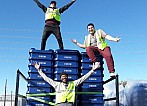 household? If so, need some money? Or a consult on how to talk to residents about recycling?
household? If so, need some money? Or a consult on how to talk to residents about recycling?
The Recycling Partnership has released their 2018 Cart Grant application! You can find it here on their website.
Details
- Funding for carts available: $7 per cart, up to $500,000.
- Funds for education and outreach are also available: $1 per household, up to $50,000.
- Communities with 4,000+ households are eligible.
- Funding comes with technical assistance from Partnership staff and tailored educational materials for your community to keep after grant process.
- If you’ve already filled out the prior online application, no need to start over – just send it on in! This new application is rolling, so you’ll be considered either way.
Contact Rob Taylor with questions or for more information.
American Forest & Paper Association Recent Blog - Should you Recycle that Cardboard Box
Cardboard boxes are a modern harbinger of joy! Everyone gets a little excited whenever they come home to find boxed Amazon packages, a subscription service box or something else they ordered outside their front door. Aside from ensuring safe carriage of our purchases, cardboard boxes play quite a significant role in our daily lives. Whether serving as a means of storing our memories or as a way to ship care packages to family and friends, cardboard is everywhere and for good reason - its incredible sustainability. Cardboard packaging is designed to be recycled, so it is important we properly recycle the cardboard in our homes and offices at every opportunity.
Cardboard can be recycled five to seven times and is a generally straightforward and easy material to recycle. In 2014, 95 percent of Americans had access to community curbside and/or drop-off recycling for cardboard boxes.
Here are six handy tips to get you started:
- Remove any box packing materials such as packing peanuts or Styrofoam.
- You don’t need to worry about removing any tape or labels from your cardboard boxes. They will be removed in the recycling process.
- If your box is dented, bent, ripped or damaged, that’s okay. It can still be recycled as long as it is dry and clean.
- Keep your boxes dry. If your boxes get wet allow them to dry before recycling them.
- Keep your boxes clean and away from food products such as oil and grease! A greasy or heavily food-stained box cannot be recycled.
- Flatten your cardboard boxes or rip them up before placing them in your recycling bin or cart. This will save space.
It is important to note that there are two types of cardboard: corrugated cardboard and paperboard. Paperboard is the thinner of the two and is used to make things like cereal boxes, shoe boxes, juice containers and milk cartons. Corrugated cardboard is the stronger, thicker of the two and is primarily used to make packaging boxes and even furniture. ALL cardboard is recyclable, but when it comes to your juice containers, pizza boxes and milk cartons, separate rules may apply, so check your local municipality for rules and tips.
Cardboard is a wonder material - strong, durable and made from a renewable and recyclable material. When we recycle it, we improve our quality of life and our environment and also help the industry make new and innovative products we use every day.
Advances In Industrial/C & D Waste Characterization
As more attention has turned to waste minimization, waste diversion and reuse over the past few decades, it has become of greater interest to understand what materials are filling up landfills across the country that could be used beneficially elsewhere. While it is feasible to manually sort through MSW samples to get statistically valid data, various approaches have been taken over the years in attempt to realistically estimate the composition of bulkier Industrial, Construction and Demolition (non-MSW) loads. During the 2016-2017 Missouri Waste Characterization Study (WCS), MSW Consultants deployed an electronic field form developed to provide real-time QA/QC on the visual volumetric estimates. With built-in material densities, it also allows comparison of estimated weights with each sample load’s scale ticket. The field surveyor navigates the program to accurately reflect the weight of the load, for instance adjusting average densities when material observations deem so for atypical circumstances, such as moisture, compacted materials, etc. The photo on the right shows the staff getting an initial look at a load of Construction and Demolition waste.
The Visual Surveying phase of the 2016-2017 Missouri WCS involved detailed volumetric measurement of the truck and load dimensions, followed by the systematic observation of the major material components in the tipped load. Loads were first classified into ten major categories then further subcategorized into forty-five materials. The table below displays a portion of the form used for in-field immediate characterization. By characterizing materials in major  categories hauled by various vehicle types during field observation at facilities, overall material volumes can be extrapolated by applying the data to the breakdown of the overall waste stream as determined during gate surveying activities. This information enables local, regional and state planners to closer identify likely sources of materials that could be diverted. Educational efforts and any other available resources can be directed toward these targets. MSW characterization data is also useful and important along these lines, but larger individual volumetric impacts on the waste stream can be realized by targeting the non-MSW load materials identified through Visual Waste Characterization approaches.
categories hauled by various vehicle types during field observation at facilities, overall material volumes can be extrapolated by applying the data to the breakdown of the overall waste stream as determined during gate surveying activities. This information enables local, regional and state planners to closer identify likely sources of materials that could be diverted. Educational efforts and any other available resources can be directed toward these targets. MSW characterization data is also useful and important along these lines, but larger individual volumetric impacts on the waste stream can be realized by targeting the non-MSW load materials identified through Visual Waste Characterization approaches.
Organics collection and composting programs are becoming more prevalent, especially in more urban areas. The photo on the left shows an Industrial load, predominantly containing organic waste.
Similar to traditional materials identified for recycling through large-scale Visual Waste Characterization, such as Old Corrugated Cardboard and metals, compostable quantities identified through this methodology can also play a large role in reaching diversion targets.
For more information, please contact Cynthia M. Mormile, Sr. Project Manager or Charlie J. Pioli, Analyst, with MSW Consultants.
Of General Interest
In Defense of Source Reduction
Source reduction is the Rodney Dangerfield of solid waste. It gets lip service but no respect. Oh sure, it’s at the top of everyone’s hierarchy, but it gets little real attention when goals and priorities are set.
The name is part of the problem. “Source reduction” is clunky and uninspiring. I’m not sure what would be better, but I like “making less waste”. That term is direct, to the point and has the added advantage of being more casual than “waste avoidance” or “waste prevention”. However, it may be too casual for the sacred halls of hierarchies. Nonetheless, it has a nice ring to it and sums up what “source reduction” really is.
How to measure making less waste is an even more difficult problem. Source reduction is harder to count than recycling. Some states have tried to solve this problem by giving it credit in their state recycling rates. My home state of Maryland, for instance, created a “source reduction credit” that gives counties up to five additional recycling rate percentage points. To get the additional points, counties must do things such as promote grasscycling, adopt variable rate pricing for waste services or tell their residents how to make less waste. This, however, is an artificial fix. The state always reports recycling first and then separately shows the additional points given for source reduction activities.
The U.S. Environmental Protection Agency (EPA) tried to answer the measurement problem with the 1999 release of “The National Source Reduction Characterization Report.” This publication may be the best EPA report that nobody read. Source reduction is defined as, among other things, making packages lighter or less toxic, designing packages to reduce product damage or spoilage and managing organics such as yard trimmings through grasscycling or backyard composting.
The agency created a methodology that honed in on per person waste generation, gross domestic product (GDP) and personal consumption expenditures (the amount of spending by consumers on goods and services within the GDP). The EPA then applied the methodology to the waste stream as a whole and to individual products to determine which products had increased or decreased use between 1990 and 1997.
The results showed that newspapers and glass containers were among the declining products while corrugated boxes and plastic bags were being used more and more. In addition, grasscycling and backyard composting programs had significantly reduced the amount of yard waste going to disposal.
Clearly, per capita waste generation (including construction and demolition waste) is the best way to measure the growth or lack of growth in waste generation. As the economy changes along with the population and the products and packages we use, per capita waste generation gives us the best picture of where we are heading and whether or not we are succeeding at making less waste.
Unfortunately, the EPA never updated the report. However, it continues to monitor per capita waste generation. That number rose from 4.57 pounds per person per day in 1990 to 4.74 in 2000. Since then, it has declined to 4.44 pounds due to ruthless package lightweighting and the loss of so much printed paper. The EPA also continues to track household spending and municipal solid waste generation. The agency’s data shows that the gap between the two is growing wider as the growth in consumer spending outpaces that of garbage.
Source reduction suffers in other ways. Commercial industries are far better at making less waste than local governments. This is because manufacturers benefit financially when they find new ways to use fewer raw materials to make more products or packages. If a company figures out how to reduce a package by, say, one ounce, then that ounce, magnified by the number of packages, can be significant. It’s the gift that keeps on giving because those savings recur every year. A manufacturer can reward its employees whose efforts helped create less waste. Best of all, those efforts create less waste for local governments to recycle or dispose.
Local governments just don’t have these options. Grasscycling and backyard composting programs and, perhaps, pay as you throw programs, can give residents incentives to make less waste. But most of the educational efforts on making less waste, such as using newspapers to wrap gifts instead of wrapping paper, run up against fixed habits and human behavior. As a result, governments concentrate on recycling programs because they can manage them.
Herein lies a problem: Some of the most successful examples of source reduction lie in packages that are, at best, difficult to recycle. Flexible packaging, for instance, provides considerable environmental benefits through its ability to consume fewer resources in manufacturing and to use less energy in delivering products. Even though they aren’t recycled, these packages have a greener footprint than many of their recyclable competitors. Since source reduction is at the top of the hierarchy, shouldn’t we be praising them? Making less waste and recycling do not always go hand in hand. When they don’t, recycling should make way for source reduction.
Perfection is the enemy of the good. Until we accept the fact that making less waste is more important than recycling—and not the other way round—we will flounder in our pursuit of a greener environment. Let’s stop giving source reduction lip service. Instead, let’s acknowledge and celebrate its immense achievements.
Chaz Miller is a longtime veteran of the waste and recycling industry and a member of the NERC Board of Directors. He can be reached at chazmiller9@gmail.com.
Recycling Terms for Beginners
Because of the complicated nature of their construction, cartons often prove to be challenging to recycle. Fortunately, in 2009, leading businesses joined to form the Carton Council, an industry organization that is a NERC Advisory Member and an active proponent of carton recycling.
According to the Carton Council, aseptic and gable-top cartons have been designated by the Paper Stock Industry (PSI) as commodity grade #52. Both are assembled in layers, and both consist of paper, polyethylene, and aluminum.
- Aseptic cartons are stored in room temperature conditions.
- Gable-top cartons are refrigerated.
During the recycling process, the cartons are broken down into their component parts. Whenever possible, the paper that is extracted is sent to a domestic paper mill (unfortunately, there are only three in the US that use the recycled paper as raw material). The mixture of plastic and foil can be used in the manufacture of plastic lumber.
One company—ReWall—uses the entire aseptic or gable-top carton to manufacture ceiling and wall tiles at its production facility in Des Moines, IA.
During 2017, the Carton Council states, the recycling of aseptic or gable-top cartons surpassed the important milestone of 60%. According to the Council, “The 60 percent access milestone allows cartons to carry the standard ‘Please Recycle’ logo under the Federal Trade Commission’s green guidelines.”
Similar types of packaging, such as frozen food and microwavable containers, are made of paper with polyethylene sprayed on. Because the sprayed polyethylene contaminates the paper, the paper is rendered useless and is often rejected by paper mills.
 categories hauled by various vehicle types during field observation at facilities, overall material volumes can be extrapolated by applying the data to the breakdown of the overall waste stream as determined during gate surveying activities. This information enables local, regional and state planners to closer identify likely sources of materials that could be diverted. Educational efforts and any other available resources can be directed toward these targets. MSW characterization data is also useful and important along these lines, but larger individual volumetric impacts on the waste stream can be realized by targeting the non-MSW load materials identified through Visual Waste Characterization approaches.
categories hauled by various vehicle types during field observation at facilities, overall material volumes can be extrapolated by applying the data to the breakdown of the overall waste stream as determined during gate surveying activities. This information enables local, regional and state planners to closer identify likely sources of materials that could be diverted. Educational efforts and any other available resources can be directed toward these targets. MSW characterization data is also useful and important along these lines, but larger individual volumetric impacts on the waste stream can be realized by targeting the non-MSW load materials identified through Visual Waste Characterization approaches. 

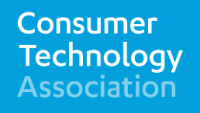
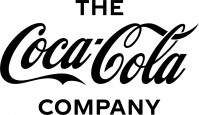


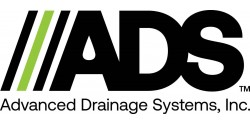

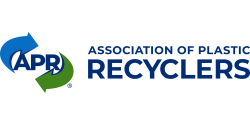
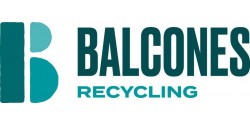


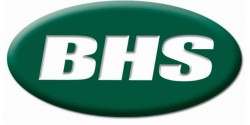
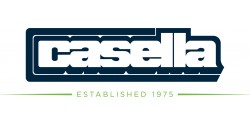

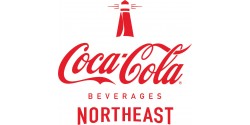
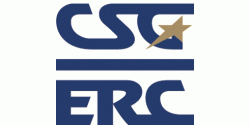
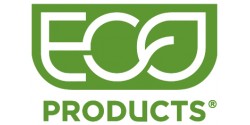
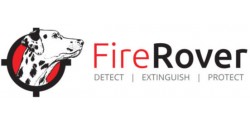
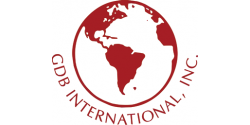
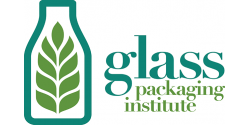


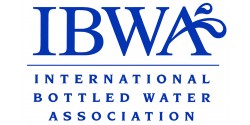
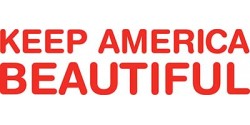


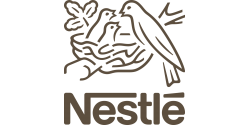
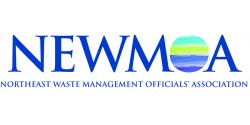


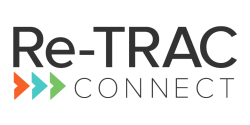
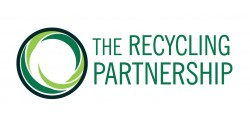
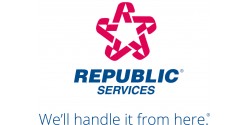



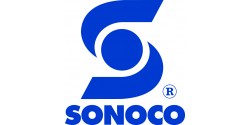
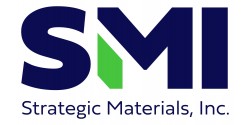

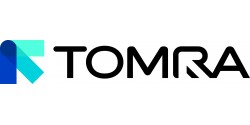

 the largest US-based company in the environmental and waste industry sector. The company serves more than 21 million municipal, commercial and industrial customers in the US and Canada. In 1988—at a time when recycling rates in the US were a mere ten percent—it launched its first major curbside recycling program. It is not a coincidence that domestic recycling rates have tripled in the decades since then.
the largest US-based company in the environmental and waste industry sector. The company serves more than 21 million municipal, commercial and industrial customers in the US and Canada. In 1988—at a time when recycling rates in the US were a mere ten percent—it launched its first major curbside recycling program. It is not a coincidence that domestic recycling rates have tripled in the decades since then. Have you ever returned from an event not knowing what the key takeaways were? The Northeast Recycling Council’s Workshop—Markets or Bust—will be sure to address this dilemma. The Workshop sessions have been designed to encourage and include the full participation of attendees. In this way, attendees will have a chance to fully comprehend and retain recycling market issues and market development opportunities for glass, compost, paper, and plastics.
Have you ever returned from an event not knowing what the key takeaways were? The Northeast Recycling Council’s Workshop—Markets or Bust—will be sure to address this dilemma. The Workshop sessions have been designed to encourage and include the full participation of attendees. In this way, attendees will have a chance to fully comprehend and retain recycling market issues and market development opportunities for glass, compost, paper, and plastics.



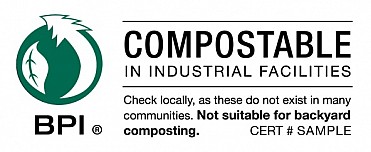
 The 4th Annual New York State Organics Summit will take place March 27 - 28 at the Poughkeepsie Grand Hotel in Poughkeepsie, NY. This yearly event engages stakeholders from across the state in facilitative discussion aimed at developing creative solutions to barriers that restrict the sustainable management of organics materials (i.e. food scraps, yard waste, manure, etc.). The end goal is to significantly increase diversion of organics from landfills by increasing donation of edible food, and by increasing organics recycling through composting, anaerobic digestion, and other processes.
The 4th Annual New York State Organics Summit will take place March 27 - 28 at the Poughkeepsie Grand Hotel in Poughkeepsie, NY. This yearly event engages stakeholders from across the state in facilitative discussion aimed at developing creative solutions to barriers that restrict the sustainable management of organics materials (i.e. food scraps, yard waste, manure, etc.). The end goal is to significantly increase diversion of organics from landfills by increasing donation of edible food, and by increasing organics recycling through composting, anaerobic digestion, and other processes. household? If so, need some money? Or a consult on how to talk to residents about recycling?
household? If so, need some money? Or a consult on how to talk to residents about recycling?